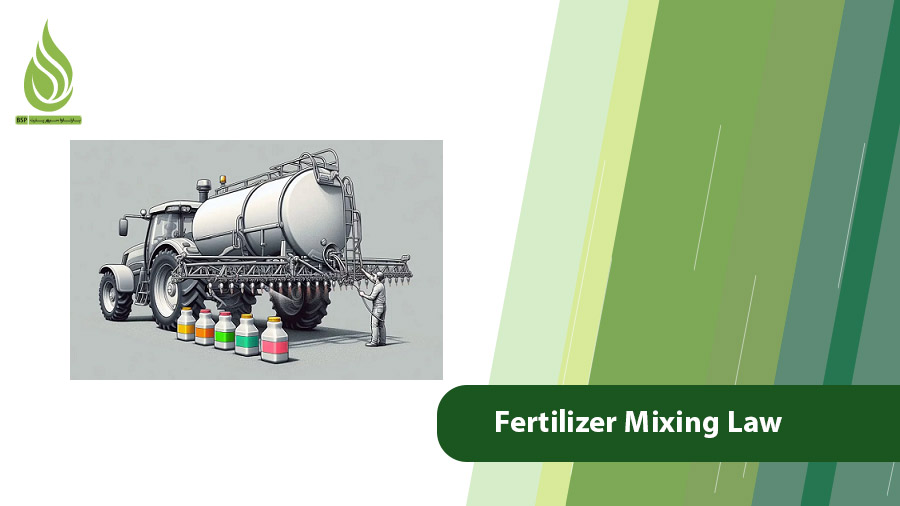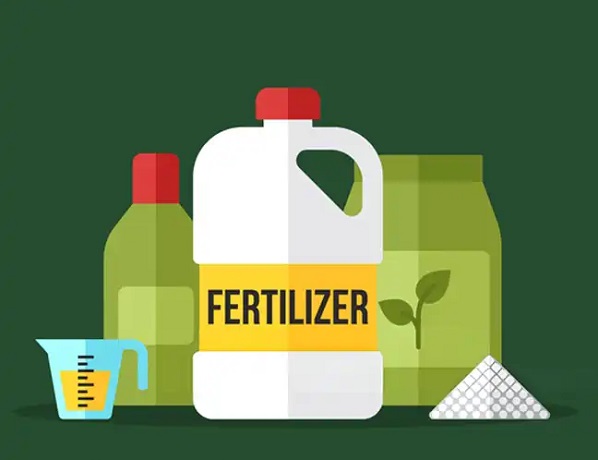
Fertilizer Compatibility & Mixing Law: Which Fertilizers Can Be Mixed?
The proper selection of fertilizers significantly impacts the quality and quantity of agricultural products. One fundamental question farmers often encounter regarding fertilization involves adhering to the fertilizer compatibility & mixing law. Not only does the strategic blending of fertilizers aid in cost optimization, but it also plays a pivotal role in enhancing productivity and soil health. Given the diverse range of chemical and organic fertilizers on the market, identifying and abiding by the correct compounds is particularly vital.
In your view, which agricultural fertilizers can be combined and utilized simultaneously? This article delves into this query in depth. Furthermore, we explore the advantages and disadvantages of mixing fertilizers and the methodology involved. Stick around to discover the guidelines for blending fertilizers and their impact on agriculture.
Advantages and Disadvantages of Mixing Fertilizers
Advantages of Mixing Fertilizers
Fertilizer blending stands as an effective strategy in modern agriculture, aiding in enhancing field yield and crop quality. Here are some key benefits of mixing fertilizers:
- Through blending fertilizers, multiple nutrients can be delivered to the plant simultaneously, saving time.
- The synergy created by mixing certain fertilizers enhances the efficacy of each fertilizer.
- The combination of organic and chemical fertilizers can enhance soil structure and boost microbial activity. Blending fertilizers aids in soil moisture conservation and reduces evaporation.
- Mixing compatible fertilizers can lead to reduced agricultural costs.
- Compound fertilizers can enhance the taste, aroma, and appearance of crops.
- Certain compounds can bolster plant resistance against diseases and environmental stressors.
- Farmers have the flexibility to select various combinations to cater to their farm’s specific requirements.

Disadvantages of Mixing Fertilizers
While mixing fertilizers offers advantages, it also presents challenges and drawbacks that may harm plants or diminish their yield. In this section, we delve into the downsides of blending fertilizers:
- Risks stemming from chemical reactions: Some fertilizers might react with one another, leading to nutrient precipitation.
- Altering soil pH: Blending acidic and alkaline fertilizers can significantly alter soil pH, potentially harming plants. pH changes can reduce nutrient availability to plants.
- Failure to meet plant-specific needs: Incorrect fertilizer combinations can result in nutrient precipitation, depriving plants of essential resources. This can lead to nutrient deficiencies or imbalances.
- Capital wastage: Choosing improper combinations can result in the squandering of resources and capital.
- Monitoring plant health becomes necessary: After blending fertilizers, monitoring plant reactions post-fertilization is crucial. Abrupt changes in plant performance may be linked to improper fertilizer mixing, which typically demands time-intensive monitoring.
Familiarizing with fertilizer types, plant-specific requirements, and soil conditions is key to circumvent these issues. Seeking advice from experts and conducting soil tests can aid farmers in selecting more optimal blends.
Fertilizer Compatibility: Getting to Know Fertilizer Mixing Law
At times, a plant may require multiple elements, leading farmers to administer various fertilizers simultaneously. In such instances, fertilizers can be applied concurrently. However, when utilizing multiple fertilizers, it is crucial to adhere to the principles of the fertilizer mixing law. Ensuring the compatibility of fertilizers guarantees that nutrients are efficiently utilized by the plant, thereby minimizing the waste of time and resources.
Fertilizer Compatibility & Mixing Chart
Compatible Fertilizer Combinations:
| Fertilizer Type | Can Be Mixed With | Benefits / Purpose | Notes / Cautions |
|---|---|---|---|
| Nitrogen (N) | Phosphorus (P), Potassium (K), Organic, Sulfur | Promotes growth, yield, and soil structure | Avoid strong pH contrasts (ideal pH six–even) |
| Phosphorus (P) | Nitrogen (N), Potassium (K), Organic | Enhances rooting, flowering, and fruiting | Avoid mixing with high calcium or iron sources |
| Potassium (K) | Nitrogen (N), Phosphorus (P), Organic | Improves fruit quality, stress resistance | Avoid combining with calcium in concentrated forms |
| Calcium (Ca) | Nitrogen (N), Potassium (K), Organic | Improves cell wall strength, soil structure | Avoid mixing with Sulfates or high P fertilizers (superphosphate) |
| Sulfur (S) | Nitrogen (as ammonium sulfate), most solids | Boosts protein synthesis, supports N use | Don’t mix with alkaline or calcium fertilizers |
| Micronutrients (Fe, Zn, Mn, Cu, B, Mo) | Nitrogen, Phosphorus, Potassium | Improves plant health and enzyme function | Avoid mixing with Ca or very acidic fertilizers; may precipitate at high pH |
| Organic (Compost, Manure) | Nitrogen, Phosphorus, Potassium, Calcium, Microbial | Enhances soil structure, microbial activity | Avoid combining with strong chemical liquids in tanks |
| Microbial Fertilizers | Organic fertilizers (solid), applied with chemical fertilizers directly into soil | Boosts beneficial soil bacteria | Do not mix with chemical fertilizers in tanks (kills microbes) |
Which elements can be combined through fertilizer mixing? Let’s evaluate the compatibility of the most crucial agricultural fertilizers with each other.
The Law of Nitrogen Fertilizer Compatibility
Nitrogen fertilizers, known for their high mixing ability, exhibit excellent compatibility. They can be seamlessly combined with other fertilizers like phosphorus, potassium, and organic variants. The blend of nitrogen and phosphorus can significantly boost plant growth, commonly applied during early growth stages. Nitrogen fertilizer also mixes well with potassium fertilizer, enhancing fruit quality and flavor when combined.
Nitrogen fertilizer blends harmoniously with organic fertilizers such as compost and animal manure, benefiting soil structure and nutrient levels. A prime nitrogen-containing fertilizer is crystalline ammonium sulfate, boasting twenty-one percent nitrogen and twenty-three percent sulfur. The fusion of sulfur and nitrogen in this fertilizer maximizes the benefits of both elements for the soil.
The high compatibility of nitrogen has rendered it a less problematic component in agriculture, barring instances where significant pH differences exist between nitrogen fertilizer and the desired counterparts. Soil pH significantly influences nitrogen uptake, with an optimal range typically falling between six and seven.

The Law of Sulfur Fertilizer Compatibility & Mixing
Solid sulfur combined with soil poses no issues with other solid fertilizers. However, caution is advised when using liquid sulfur, as alkaline fertilizers can lead to material precipitation and reduce efficacy. Sulfur’s acidity elevates soil acidity levels, affecting the efficiency of alkaline pH fertilizers when mixed. Calcium fertilizers should not be used concurrently with sulfur fertilizers to maintain their efficacy. Ammonium sulfate fertilizer, a blend of nitrogen and sulfur, adheres to the laws governing sulfur fertilizer compatibility.
The Law of Phosphorus Fertilizer Compatibility
Phosphorus fertilizers exhibit high reactivity with certain elements. Fertilizers containing phosphorus, like superphosphate, pair well with nitrogen fertilizers, fostering root growth, and enhancing flower and fruit yield. Phosphorus also meshes effectively with potassium, bolstering product quality and plant resilience to stress. The compatibility of phosphorus fertilizers with organic variants enhances soil structure and nutrient availability, proving beneficial during early growth stages and planting for optimal plant development.
The Law of Potassium Fertilizer Mixing
Potassium fertilizers mesh effectively with various counterparts, enhancing crop growth and quality. Combining potassium with nitrogen fosters improved plant growth and fruit quality, enhancing protein production and flavor. Potassium and phosphorus blends enhance nutrient absorption and overall plant growth, promoting robust rooting and flowering. Pairing potassium with organic fertilizers like compost bolsters soil structure, nutrient levels, and microbial activity, with soil pH levels between six and seven proving ideal for potassium absorption. Utilizing potassium at distinct plant growth stages, especially during flowering and fruiting, is recommended for optimal results.
The Law of Calcium Fertilizer Compatibility
Calcium fertilizer can significantly impact plant growth and soil structure improvement. Typically, calcium fertilizers, like calcium carbonate, are compatible with nitrogen fertilizers, aiding in enhanced nitrogen absorption and mitigating acidic soil issues. They also generally pair well with potassium fertilizers, such as potassium chloride, improving fruit quality and plant stress resistance. Additionally, calcium fertilizers blend effectively with organic alternatives like compost and animal manure, bolstering soil structure and nutrient content.
However, calcium fertilizers may not align well with certain compounds. While they can be combined with phosphorus fertilizers like superphosphate, caution is advised to prevent excessive reactions that could lead to phosphate deposit formation. Mixing calcium with acidic fertilizers can significantly alter soil pH, potentially harming plants. Therefore, it’s advisable to avoid combining calcium with ammonium sulfate.
One notable incompatibility involves sulfur fertilizers. Calcium fertilizers should not be mixed with sulfate-containing fertilizers such as ammonium sulfate, as this combination can yield insoluble compounds, reducing fertilizer efficiency.
The Compatibility of Mixing Micronutrient Fertilizers with Other Fertilizers
Micronutrient fertilizers play a crucial role in plant growth and development, containing essential elements like iron, zinc, manganese, copper, boron, and molybdenum. Generally, micronutrient fertilizers blend well with nitrogen fertilizers and often pair effectively with phosphorus fertilizers, such as superphosphate. It’s crucial to consider soil pH and specific conditions when combining micronutrients with phosphorus, as certain micronutrients may precipitate at higher pH levels. Micronutrient fertilizers also tend to be compatible with potassium fertilizers.
Care must be taken when combining calcium with micronutrients, as elements like iron and zinc can interact with calcium, rendering them unavailable to plants. Mixing micronutrients with acidic fertilizers should be done cautiously to avoid damaging soil pH.
Micronutrients are available in complete and liquid fertilizer forms. Liquid micronutrients mix easily with other fertilizers and offer better absorption, while uniform mixing is essential for solid fertilizers.
The Law of Mixing Microbial Fertilizer
Combining microbial fertilizers with organic variants is highly beneficial for enhancing soil health and microbial activity. Yet, caution is necessary when blending microbial fertilizers with chemical counterparts. Microbial fertilizers contain living organisms and should not be mixed with liquid chemical fertilizers in a fertilizer tank, as this can increase salinity and reduce bacterial populations. However, mixing chemical and microbial fertilizers directly into the soil is generally safe. Placing them together in a tank can harm the bacteria in the microbial fertilizer.

Identifying Incompatible Fertilizers
Several scenarios highlight incompatible fertilizer combinations:
- Calcium can reduce nitrogen effectiveness upon reaction.
- A mix of potassium and calcium may lead to deposits and hinder potassium absorption.
- Simultaneous use of acidic and alkaline fertilizers can alter soil pH and damage plants.
- Combining phosphorus and iron fertilizers can cause phosphate precipitation and reduce iron availability.
- Calcium fertilizers should not be paired with sulfate and phosphate fertilizers.
- Mixing high-phosphorus fertilizers with micronutrients can cause micronutrient precipitation.
- Microbial and biological fertilizers should not be mixed with liquid chemical fertilizers.
| Incompatible Mix | Reason / Effect |
|---|---|
| Calcium + Sulfur (e.g., ammonium sulfate) | Forms insoluble compounds; reduces efficiency |
| Calcium + Phosphorus | Causes phosphate precipitation |
| Calcium + Micronutrients (Fe, Zn) | Forms unavailable compounds; nutrient lock-up |
| Potassium + Calcium | Can cause deposits; hinders K uptake |
| Acidic + Alkaline fertilizers | Alters soil pH drastically; harms roots |
| Phosphorus + Iron or high Fe micronutrient fertilizers | Causes phosphate precipitation; reduces Fe availability |
| High-Phosphorus + Micronutrients | Micronutrients precipitate out |
| Microbial + Liquid Chemical fertilizers (in tanks) | Increases salinity; kills microbes |
Soil testing is vital to identify soil needs and issues, ensuring optimal fertilizer compatibility. Understanding which fertilizers don’t align well is crucial to prevent problems. Following mixing principles and testing small-scale combinations can prevent larger issues.
Combining Different Fertilizers
Correctly combining agricultural fertilizers can enhance plant growth and crop productivity. Fertilizers can be mixed before planting or during plant growth to supply early-stage nutrients.
Before blending fertilizers, understand the plant’s nutritional requirements. Each plant varies in its nitrogen, phosphorus, and other needs. Conduct a soil test to gauge nutrient levels and pH, aiding in informed decisions. Adhere to fertilizer compatibility guidelines when combining different types.
Follow recommended mixing proportions based on plant type and environmental conditions, adjusting as needed. Use fertilizers at appropriate times for maximum efficacy, opting for liquid or solid forms. Spread solid fertilizers evenly and monitor plant reactions for adjustments if damage or deficiencies arise.
